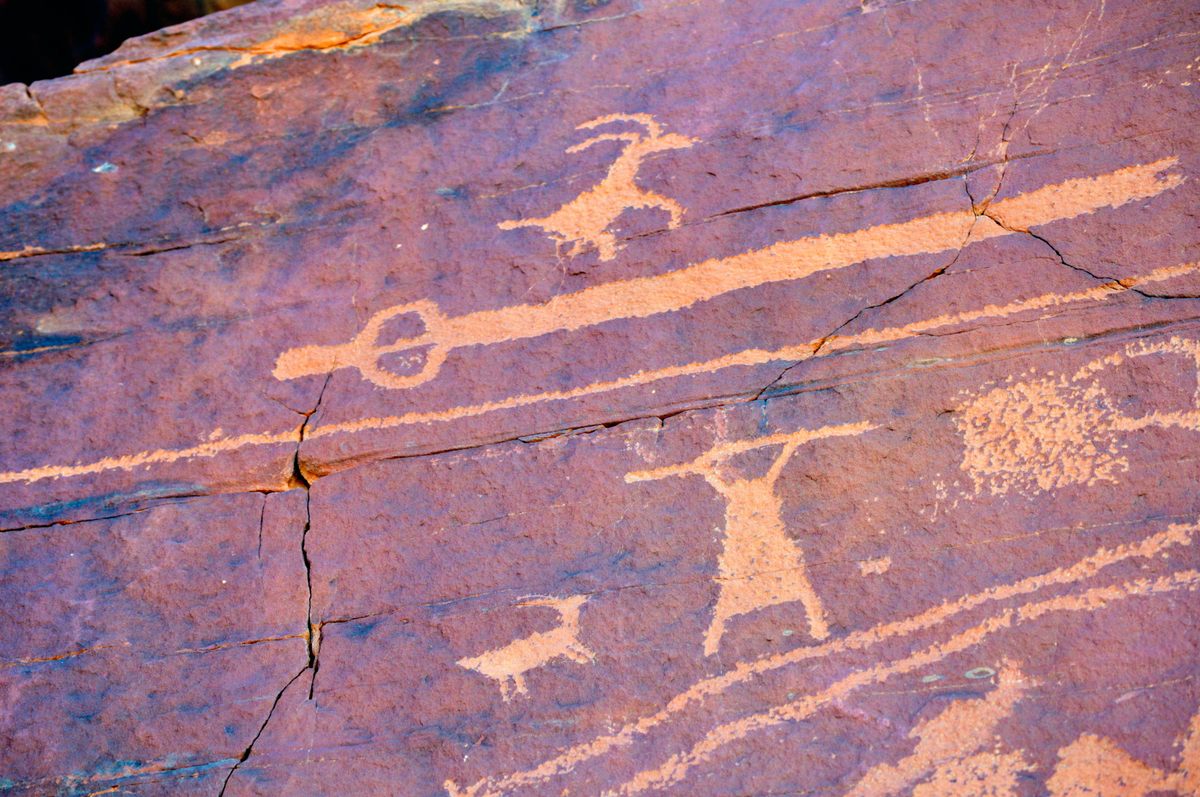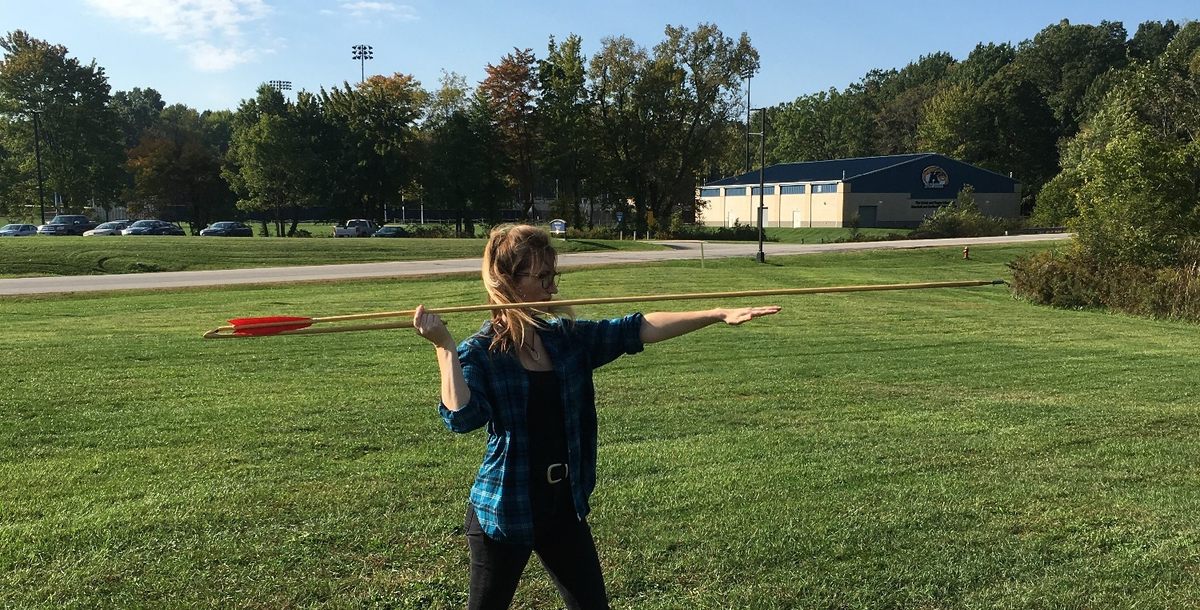How Ancient Dart Launchers Changed the Game for Early Female Hunters
A female archaeologist is challenging the idea of men as hunters and women as gatherers, one throw at a time.
The subtleties of women have long baffled men. Take anthropologist William Webb. In the 1940s, he was briefly perplexed to find hunting tools in the ancient graves of women. Webb, then head of the department of archaeology and anthropology at the University of Kentucky, was investigating the Indian Knoll site, from the Late Archaic Period (5,000 to 3,000 years ago). He concluded that the hunting gear—in this case an atlatl, or spear-thrower—must have been placed there by husbands, or because they made pretty hair ornaments.
“It is hardly to be supposed that … women would have any practical use in life for an atlatl … such occurrences represent true burial offerings to the dead of artifacts primarily intended for the use of men,” Webb wrote in 1946.
Webb, a white cis-man, was operating off a long-held assumption of a male-dominated field: Men hunt, women gather.
“There’s a lot of assumptions about gender roles in archaeology that really aren’t supported,” says Metin Eren, an experimental archaeologist at Kent State University in Ohio. “The reason why we have assumptions about gender roles is because it was males over the 20th century that made those assumptions. It’s important to give preeminence to evidence and not assumption.”

According to recent evidence, including a new study in Science Reports, there’s no reason to think that ancient women didn’t use hunting gear to deadly effect. As early as 22,000 years ago, communities of hunters on every continent except Africa (though this may be due to lack of archaeological evidence on what would be a much older timeline) shifted from throwing spears like javelins to using the atlatl, a kind of handle that uses leverage to propel a spear farther and faster. For the current study, researchers got 108 people to throw spears various ways. When it came to throwing like a javelin, males outperformed females. But when an atlatl was involved, that difference all but disappeared. The findings support the “atlatl equalizer hypothesis,” posited by researchers John Whitacker and Kathy Kamp at Grinnell College in Iowa, which states that strategic leverage might have made hunting a practice for everyone in an ancient community.
“This and other research seems to be all converging on the idea that there’s much more diversity in how we organized labor in the past, and it doesn’t always fall along the gender lines that we see in the present,” says archaeologist Randall Haas of the University of Wyoming, who was not involved in the study.

In 2020, Haas, his colleagues, and members of the Mulla Fasiri community in southern Peru uncovered a 9,000-year-old grave in the Andes that proved to be the oldest known burial of a female that included big-game hunting gear, neatly placed around her body with the scattered bones of large mammals. After examining the remains of another 429 people from across 107 sites across the Western Hemisphere, the team estimated that 30 to 50 percent of ancient big-game hunters in the communities they studied were female. This conclusion was a slap in the face to previous assumptions about gender roles in early hunters and gatherers. A flurry of investigations into womens’ roles as hunters followed. “If we can understand the way that these technologies intersect with gender dynamics,” Haas says, “then we stand to learn something about a huge section of humanity throughout the world and into our deep evolutionary past.”
The experimental archaeology lab at Kent State likes to put these ideas to the test. An atlatl is a loadable lever made of wood, bone, or antler. Think about it like a tennis ball launcher for a dog, says lead author Michelle Bebber, an experimental archaeologist at Kent State. An atlatl, about two feet long but maybe as short as five inches, has a small spike at the end opposite the handle. The butt end of a long, sturdy spear-like dart—six feet long for the study—can be notched there. The thrower holds the handle instead of the dart and then uses more or less a normal throwing motion. Leverage does the rest.
At an abandoned sports field on the outskirts of campus, Bebber invited students—and their parents, partners, or anyone else who would show up—to try their hand at both throwing techniques, for science. Through rain and snow, she spent “countless hours” on the field. “It’s a testament to her commitment to this project,” says coauthor Eren. “She was out there in the winter time and it was cold and just the fact that she got over 2,100 weapon launches—that’s why nothing like this has been done before.”
The hard work paid off. They found that males threw javelins faster than females, from 26 to 52 feet per second for males and 16 to 38 feet per second for females. But when it came to launching darts, sex didn’t matter as much—the more important factor was grip strength, which isn’t as strongly tied to sex. The researchers concluded that, essentially, females have the same atlatl potential as males. “If you’re on the playground and you’re picking teams for the javelin, you will pick strong males. For the atlatl, you will only pick strong” says Eren, quoting coauthor Briggs Buchanan, an anthropologist at the University of Tulsa.

“I think that narrative is really important to see, that women weren’t just passive and that they were able to fully participate in hunting activities,” says Bebber. “They were likely creative and observant and might have even invented a technology like this.”
The researchers propose the “equalizing opportunities” of the atlatl could go beyond sex and gender roles. Bebber is looking at a wider range of ages. Haas would like to see the extent to which skill matters, and whether this holds up with other early hunting aids. “I think it’s a solid analysis and it seems to bear out some earlier hypotheses,” he says. “It does a good job of rigorously evaluating and I think that the results are compelling. It would be nice to see some extensions with individuals who have more experience and to see similar experiments that involve use of archery technology.”
Haas agrees that this paper helps add important nuance to our understanding of gender roles—past and present. “Understanding the extent to which we engaged in sexual division of labor, or any kind of division of labor in the hunting and gathering context can help us better understand any disparities, unification, or divisions that we see between sexes or in different gender roles today,” he says. “I won’t say [this study] confirms, but it supports, this idea that our previous understanding of gender and labor practice in the past was at least off the mark by quite a bit.”












Follow us on Twitter to get the latest on the world's hidden wonders.
Like us on Facebook to get the latest on the world's hidden wonders.
Follow us on Twitter Like us on Facebook